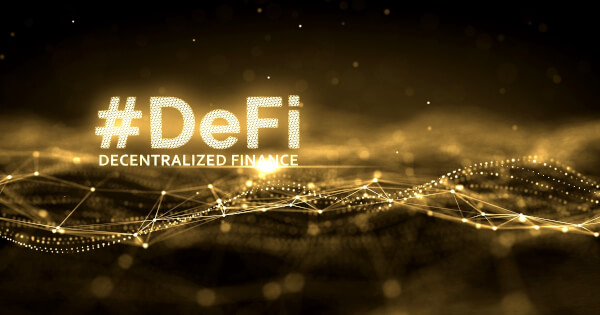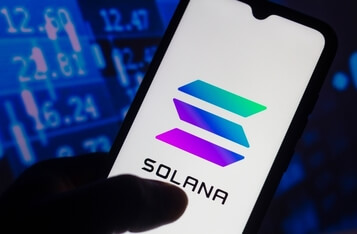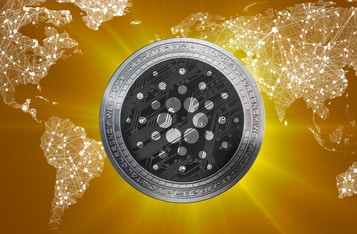Ways DeFi is Changing Finance and its Stand in 2020
Decentralized finance (DeFi) is the bridge between traditional centralized currency and decentralized cryptocurrencies like Bitcoin, Ethereum. Here's how it's changing finance.

Blockchain technology has made its own name for various reasons, mainly by separating itself from the controls of a central authority. However, this hasn’t been very acceptable in the minds of most governing bodies. As we can see the high volatility of the cryptocurrencies, we cannot say most of it isn’t for good reasons. Nevertheless, people came up with a way to dilute the tension by combining the two - centralized finance and decentralized ledger.

What is DeFi?
DeFi aka Decentralized finance is essentially the bridge between the traditional centralized currency and the more unconventional and decentralized cryptocurrencies like Bitcoin, Ethereum, etc. Here, developers build the same conventional financial apps, using a decentralized network and blockchain technology, simply on a small scale at a time.
Most DeFi applications come in the form of dApps or decentralized apps, and decentralized data and metrics are used to determine the interest rates and currencies. Most dApps are based on a blockchain framework like Ethereum, which offers the option of using its own native cryptocurrency to build blockchain applications. If the same blockchain framework is used to develop more than one app, say Ethereum, then they can also be combined or changed to create more dApps offering more solutions.
Features of DeFi
Decentralized finance uses blockchain as the underlying technology which comes with its own iron-clad security and data privacy, along with a peer-to-peer, decentralized network to build apps on. All data, before being added to the chain, are tested by potentially millions of computers all over the world. Once the data is added, however, it cannot be changed without leaving a trace. The developers and users of blockchain technology refer to a platform created with it as practically unhackable as hackers don’t enjoy many benefits in the process.
Apart from the privileges of blockchain technology, there are some more advantages DeFi apps enjoy, which might just make dApps more superior apps of all times:
● Decentralized algorithm:
In this method, interest rates and currencies are determined by decentralized data and algorithms on the platform of blockchain technology.
● Human interference minimized:
Financial and other transactions use smart contracts instead of humans for operation.
● Open source coding:
DeFi software engineering is mostly open-source, meaning that anyone can review it and verify its features, protection and capabilities. The framework is extremely safe and trustworthy, as all users have all the information at all points and therefore know for sure that the apps do not run any malignant hidden code in the background or steal any data without the user's knowledge.
● Inclusive and borderless:
DApps are truly democratic as an open-source site, with no bias or even the control generated by countries' borders. Anyone around the world with a computer system and an internet connection can be a part of the Decentralized Finance network. The ultimate aim of DeFi is to create a truly borderless economy.
● Needs no one’s approval:
The building or using a DeFi app does not require approval from anyone. Therefore, this platform assuages you of the large number of regulatory verification systems needed to achieve inclusion in the conventional financial system in the global economy. "DeFi is also often referred to as "open finance" for being so explicit and flexible.
● Flexibility in development:
If a user wants to add more functionality to a dApp, he/she can securely integrate third-party apps into it as necessary, which gives more versatility to developers. More interesting part is that the users can even build their own interfaces if the current options deem inadequate for them.
How is decentralized finance changing the finance industry?
The financial industry's traditional system is centralized. This implies that a central governing body issues the standard currency we use and therefore, controls the supply and flow of it; taking all the responsibility for the risks in the investments. In this system, all your assets, including your bank accounts and your mortgages are regulated by the centralized financial institutions which promises you high profit while applying an interest rate on your investment.
On a surface level, this might sound like a good thing, and it is, when the central regulating body is honest, works in the public interest, and is non-corrupt. However, we rarely see this happening in reality and the current centralized financial system raises a number of issues. Not only do human intermediaries make extremely costly errors in judgement sometimes, but they also increase the cost of transaction as well as the possibility of corruption. Many times the central authority is biased towards themselves and the rich and powerful, profits go unrecorded and directly into the pockets of the central body. The rich also hold the majority shares in the most profitable organizations, keeping them far out of the reach of the middle-class and the poor. What is more, this system is extremely exclusive, especially when it comes to borrowing. A long list of eligibility criteria and the fear of losing big also doesn’t excite the average income employee to invest big.
So what exactly it is about decentralized finance that is transforming the industry?
Decentralized finance solves the above-mentioned issues by giving the power back to the people. Decentralized Finance gives you the choice of controlling your assets and investments by yourself, with full transparency. All the transactions are conducted over smart contracts powered by the technology of blockchain; in a secure, immutable, and private manner. A lot of companies like Polymath, Coinbase, Tribe Digital Ventures, etc. simply take this specific approach of the application of blockchain technology and offer security tokens which for the authentication of a person’s identity.
● The tokenization of all assets:
These native cryptocurrencies of a decentralized framework are typically used as reward tokens. The value of these tokens is determined by your properties, the ones that you choose to turn into digital ones. These can be practically anything from actual cash to buildings, lands, or even collectibles - anything someone else might find value in. The tokens can be used by anyone who has access to the DeFi system to exchange, borrow against, sell, invest in, etc until their value is added to the dApp distributed ledger. This system of broad tokenization allows everyone - rich and poor alike - to invest in anything they want, in any way they want. It also reduces the chances of market manipulation and corruption.
● Easier and cheaper transactions:
Blockchain technology effectively eliminates all intermediaries from the system - meaning little or no expense for the transaction, authentication, expenditure, loan application, as well as the consultant fees for various applications.
● Open lending protocols:
Decentralized Finance offers you one more interesting and innovative concept - open lending protocol. Here the decision making, the verification, connecting the lender and the borrower - everything is performed in a smart contract, with no human middle-men, making the process faster and cheaper, as explained above. Moreover, you can use anything as collateral, including your physical assets as well as for cryptocurrencies themselves. With no long verification or credit check criteria, everyone can apply for a loan at the same interest rate.
So, where does DeFi stand in the real world, as of 2020?
Decentralized finance certainly shows a lot of promise for the future of the finance industry. However, that does not mean it’s moving any slowly at present. There are already a plethora of successfully running dApps. Specializing in a number of areas of the finance sector like lending and borrowing, financial transactions, and many more; they already are making names for themselves, at least in the finance world. It is only a matter of time when they will be common knowledge to the general public. As a matter of fact, the investment in the DeFi market has risen from $276 million in 2019 to nearly $11 billion by October 2020, and there is no doubt that it is only the beginning of a long and successful path.
● Lending and borrowing:
One of the most common use cases for decentralized finance frameworks is used for borrowing and lending. The idea for the users is to lend their cryptocurrencies to a lending pool and, based on that, receive interest - just like what we do now in fiat currencies. However, the differences between these two types of systems are staggering. Many of the lender dApps like Torque provide loans for an indefinite period of time, which is never going to happen with systems dealing in fiat currency. You can borrow against your assets which potentially can be anything, and even can be fractions of your bigger assets as assets are tokenized in this system; as explained earlier. Some dApps like Dharma even make a withdrawal from the system easy, which can be done at any point with no consequences.
● Financial transactions:
For a long time, there weren’t any cryptocurrencies that allowed quick and trustworthy transactions, and because of this, many merchants stopped accepting crypto payments. However, as we have already seen, crypto transactions do have a number of benefits and can be much more secure, private, inclusive, and easier to use than any other wallet; and hence, extremely useful. Moreover, no intermediaries for the transactions make them a much cheaper alternative to current payment apps dealing with fiat currency.
So it is no wonder that as decentralized finance arrived at the market, a lot of companies like Codefi Payments, Connext, etc. jumped at the opportunity of making dApps focusing on payments; which would harness the power of cryptocurrencies, to enable quicker and extremely secure transactions with meager processing and transaction cost. The developers of payment-based dApps like Payscript even promise complete protection against the price swings of Bitcoin and other crypto coins, making these even safer. Companies like Groundhog went a bit more innovative and created the app for making crypto-based subscriptions, with the sheer flexibility of being added to an existing model with few simple lines of code. Almost all these wallets allow the conversion of fiat money to cryptocurrencies and vice versa, to make them additionally convenient for all merchants and buyers.
● Asset management:
As already discussed, any decentralized network powered by blockchain technology keeps a more private and secure record. You are in charge of everything - no one can modify the information that you have entered in the blockchain ledger. So dApps are the natural choice for the crypto-assets that you would like to manage. There are several crypto wallets like Burner Wallet, MyEtherWallet, and the like, that help you to communicate with other apps for selling, purchasing, exchanging, and earning interest on your assets safely and effectively. On top of it, dApps like MetaMask enable their wallets to both manage the accounts as well as link every person to the blockchain. Others like Gnosis Safe even allow storing of the assets on multiple devices.
● Decentralized exchange:
Another very famous application of DeFi is a decentralized exchange. These are essentially crypto-currency exchanges that do not need any central authority. In addition, they enable users to connect directly with other peers and to ensure that influence still stays with the users. They thus help to minimize any price manipulation, any form of fraud, or hacks. Some DEXs like AirSwap offer to trade with no requirement of any charges, or registration procedures; making them cheaper and easy to use. Some of them like Liquality went even further and a crypto browser extension where you can swap your own crypto across other cryptocurrencies while keeping whole control over your assets.
● Open marketplaces:
Marketplaces are excellent platforms for the application of decentralized finance, and not so surprisingly, there quite a few dApps got into just that. These dApps help users promptly share resources without involving third parties. By doing so, these apps actually make way for full-scale globalization, which we can expect before long. For example, Gitcoin created an open-source platform for all developers, where they share codes for various projects publicly. They even offer workshops, along with certain payouts as incentives. Another ingenious application of this is Ethlance which encourages freelance work in exchange for cryptocurrency instead of regular money, where the company takes no cut for itself. Many more such applications have already been created based on the technology of decentralized finance.
Conclusion
Today when we are nearing the end of the year 2020, dApps are only on the rise, within just three years of originating. Going forward, we only hope for a purely borderless economy, bringing true equality among people on this planet.
About the Author:
Ralph Kalsi is an entrepreneur, blockchain enthusiast, and consultant who collaborates with businesses in Australia. With his vast knowledge and industry experience, he helps to drive sustainable business growth. He is the proud founder of Blockchain Australia Solution.
Image source: Shutterstock

.jpg)
